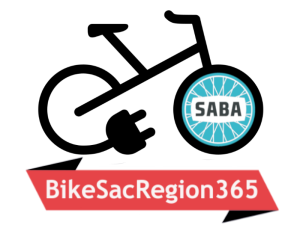E-Bikes 101

What are E-Bikes About?
An e-bike is a regular bike with a battery powering a motor to assist with pedaling. E-bikes are FUN machines that help you get from point A to point B quickly and cost-effectively, while helping the environment and your well being along the way.
Compared to electric vehicles, e-bikes are 20 times more energy efficient and deliver 30-100 times more miles per pound of battery. They will move you more than 70 times as far as a gas fueled car per pound of CO2 emissions.
Compared to electric vehicles, e-bikes are 20 times more energy efficient and deliver 30-100 times more miles per pound of battery. They will move you more than 70 times as far as a gas fueled car per pound of CO2 emissions.
E-Bike Basics
Class 1 - Pedal Assist
Class 1 bikes are pedal assist only. They will assist you in pedaling your bike up to a speed of 20mph.
Class 2 - Pedal Assist & Throttle
Class 2 bikes have both pedal assist and a throttle, which boosts pedaling, up to 20mph when needed.
Class 3 - Pedal Assist+
Class 3 bikes are pedal assist only, but with a max speed of 28mph. These bikes come equipped with a speedometer and require riders be at least 16 years of age and wear a helmet. Class 3 e-bikes are typically not allowed on trails or bike paths.
Maintenance
Some bike shops will only work on e-bikes they sell, or at least only ebikes from reputable brands. The lowest priced e-bikes may not have replaceable parts or batteries and may be turned away by some mechanics.
Hub Motor vs. Mid-Drive
E-bikes with hub motors in the front or rear wheel are the most common. Mid-drive motors are mounted between the cranks arms. Mid-drive bikes often cost more but offer a more natural feeling ride. Hub motor assistance can feel like a strong tailwind while mid-drive feels like your legs have super powers.
Pricing
E-bikes have a larger initial investment compared to regular bikes, but a much lower one to any kind of gas-powered transportation. Consumers can find e-bikes online starting around $800 or less. However, reliable e-bikes that are serviceable, with reliable batteries and components, usually start closer to $1,200. For cargo e-bikes and e-bikes with more features or upgraded components, consumers can expect to spend $2,000 or more.
Range
The distance you’re able to travel on a single charge will vary depending on a number of factors like hills, cargo weight, wind and temperature. Many companies quote +/-40-60 miles on a single charge.
Things to Consider Before Buying Your E-Bike
Storage/Weight
E-bikes weigh 30-80 pounds. Most owners need space on the ground for storage, without stairs or lifting.
Where to Buy: Online vs. Local Shop
If you buy from a local shop, you get sized properly and can test ride bikes. Bikes bought from local shops can have better warranties and are more serviceable when it comes time for repair. Some shops only repair e-bikes they sell, or at least only e-bikes from reputable brands. While you can buy a bike online to have it shipped to your house, these bikes still need to be put together by a bike mechanic. Shop local!
Locking
Protect your investment with a substantial lock. Secure the frame and wheels to a stationary object. Register your bike at bikeindex.org.
E-Bikes Are
- Great at climbing hills, beating headwinds, tackling long commutes, hauling kids and loads.
- Safer in traffic thanks to the extra power boost.
- Cheap to ride – less than a penny per mile to charge the battery.
- Easy to park and you can save on parking fees.
- Great at slipping around and through traffic.
- Impressively efficient – equal to 1,000 to 4,000 miles per gallon.
- Good for your health – but won’t make you sweat (unless you want to).
- Easy on creaky joints.
- LOTS OF FUN!






